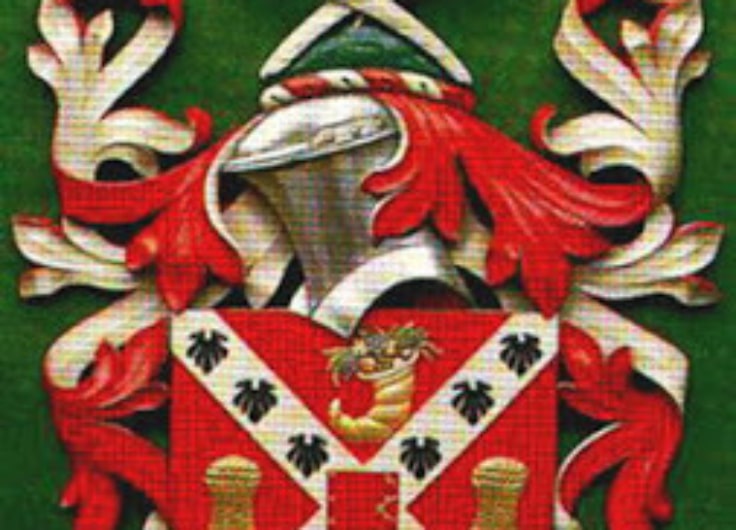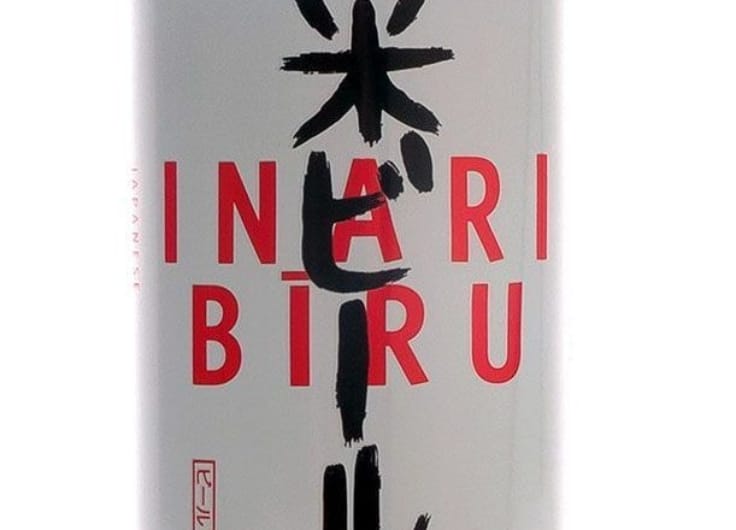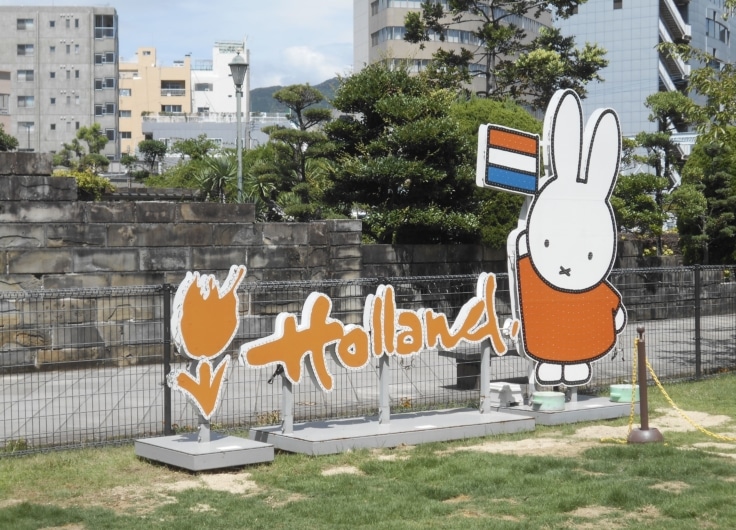Young Taiwanese Had to Learn Dutch at School in the Seventeenth Century
The official language of Taiwan may be Mandarin Chinese, but you shouldn’t be surprised if you still hear islanders say a few words that sound rather Dutch. In the seventeenth century parts of Formosa (present-day Taiwan) were occupied by the Dutch for decades, or more precisely, by the Dutch East India Company. Their short stay has had a lasting impact on the language the islanders still speak today.
Despite its best efforts, the goal of gaining a foothold in China was one that the Dutch East India Company never really achieved. In 1622, it attempted to take the Portuguese colony of Macau, but was repelled. Eventually, in 1624, the Dutch established a trading post in the south of the island of Taiwan, which they called Fort Zeelandia. This functioned as a stopover for ships to and from Japan and as an entrepôt for trading with Chinese merchants. When they arrived, the island was inhabited by various groups of Austronesian aborigines, numbering some 60,000, and about 10,000 Chinese from Fujian and Guangdong provinces, who were mainly traders, fishermen, pirates and smugglers. The number of Chinese would increase dramatically as a result of political instability on the mainland towards the end of the Ming dynasty. By 1661 there were as many as 50,000 Chinese on Taiwan.
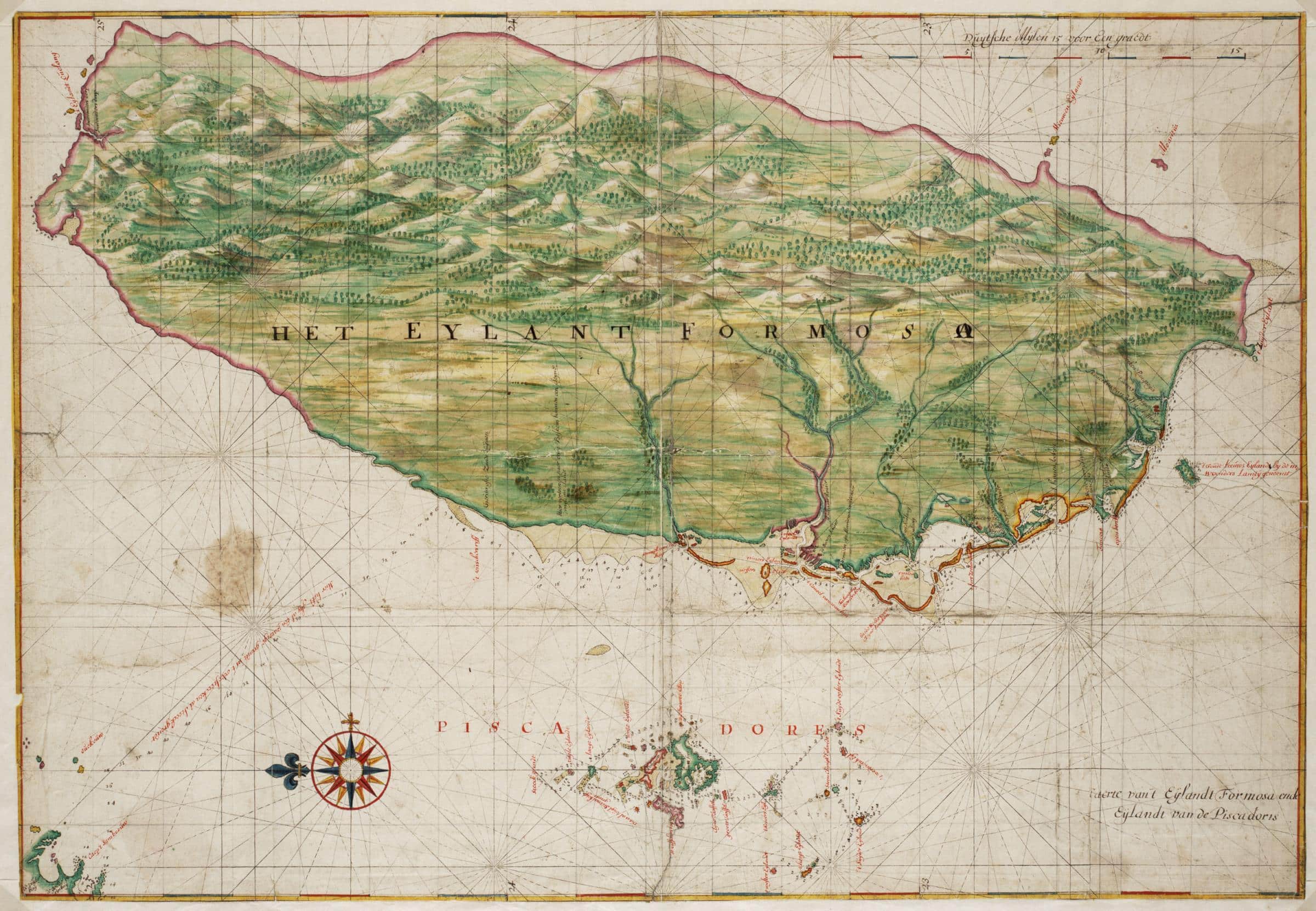 Map of the island of Formosa, by Johannes Vingboons (1616-1670), ca. 1640, taken from the Atlas of Mutual Heritage
Map of the island of Formosa, by Johannes Vingboons (1616-1670), ca. 1640, taken from the Atlas of Mutual Heritage© Dutch National Archives
In 1626, fearing that the Dutch might launch an attack on their base in the Philippines, the Spanish established a colony in the north of Taiwan, which also served as a base for Catholic missionaries. They remained there until 1642, when the Dutch drove them out. The Dutch themselves were driven out of Taiwan in 1662 after the Chinese merchant-cum-warlord, Zheng Chenggong (國姓爺) (Koxinga) (1624-1662) had laid siege to the island, with the Dutch either being killed or escaping to Batavia or the Dutch trading post in Japan.
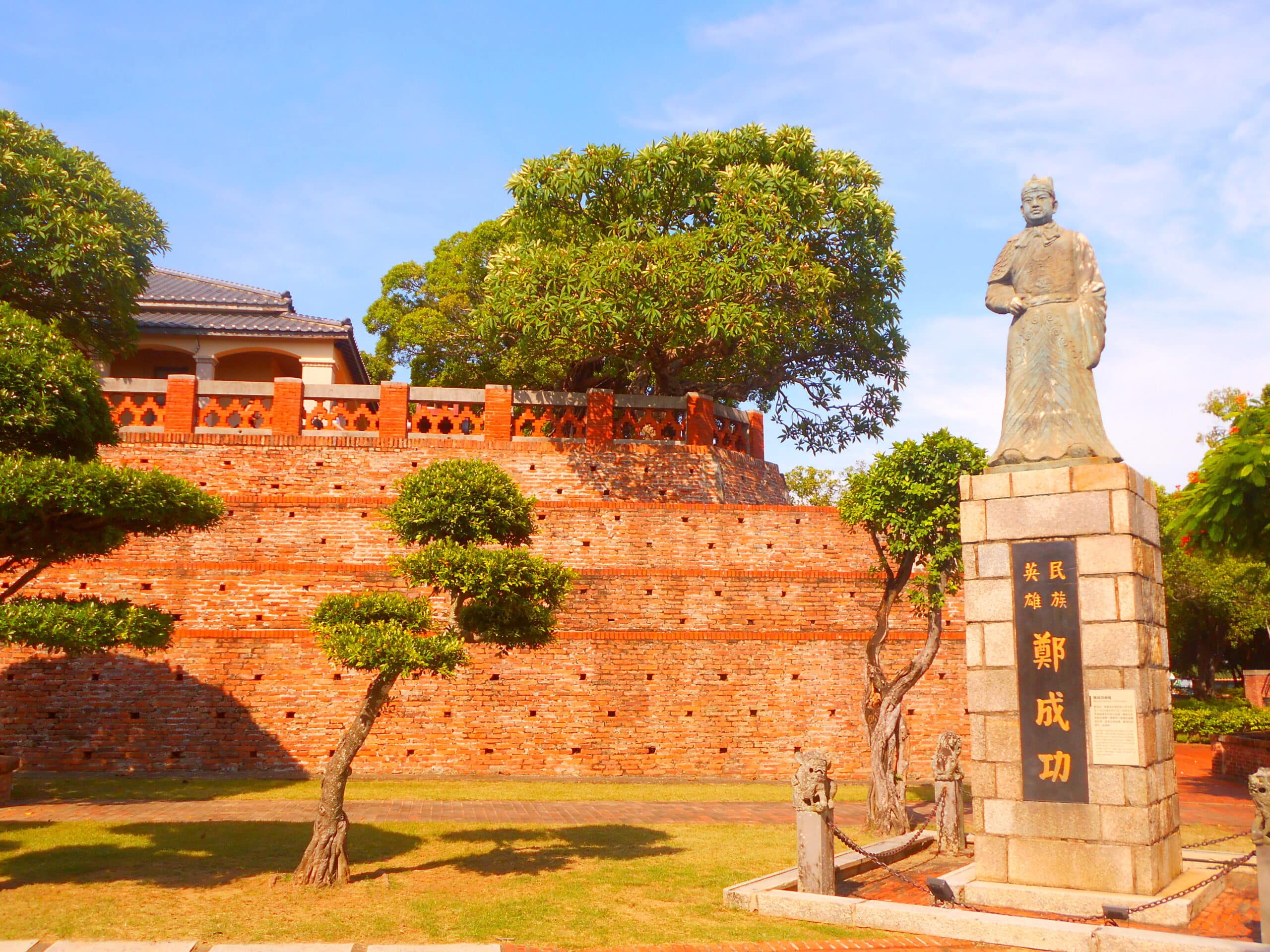 Statue of the Chinese merchant-cum-warlord Zheng Chenggong at Fort Zeelandia
Statue of the Chinese merchant-cum-warlord Zheng Chenggong at Fort Zeelandia© Christopher Joby
And what about the Dutch language? The spread of the language was largely driven by Dutch Reformed Church missionaries. Here, we can identify two phases. In the first phase, from the late 1620s to the late 1640s, the emphasis was on the Dutch learning native languages and using those to proselytize native people. One of the first ministers on the island, Georgius Candidius (1597-1647), believed that instructing the aboriginal people to read and write would promote Godliness. He therefore encouraged the colonial administrators to arrange for a continual succession of ministers to learn the Sinkan language. His successor, Robert Junius (1606-1655), who arrived in Taiwan in 1629 and left in 1643, learnt this language and compiled a catechism in it. By 1638 in the schools established by the Dutch, there were 400 registered students learning doctrine in the Sinkan language written in Roman letters. Although this did not do much for the spread of Dutch, it did familiarize native people with the Roman alphabet, preparing them for the second phase of this story, in which there was a shift towards teaching them Dutch.
The spread of the Dutch language was largely driven by Dutch Reformed Church missionaries.
In the early 1640s the East India Company changed its policy, encouraging the teaching of Dutch to indigenous people in the areas of South and East Asia that it controlled. However, it was not until February 1648 that Dutch was officially introduced in schools in Taiwan. From this time onwards there was an increased use of Dutch alongside the native tongues. The school day would be divided so that instruction was given in the ‘Formosan language’, i.e., Sinkan, in the morning and Dutch in the afternoon. Bilingual works were produced, such as the catechism, Leerstukken Ten gebruikke der schoolen van ’t Favorlang district, completed in 1650, which had parallel texts in Dutch and the indigenous Favorlang tongue. Dutch books were imported and a process of Hollandiseering or ‘Dutchification’ of Taiwan got underway. Further bilingual materials were produced as the Dutch missionaries continued to study and transcribe the principal native languages.
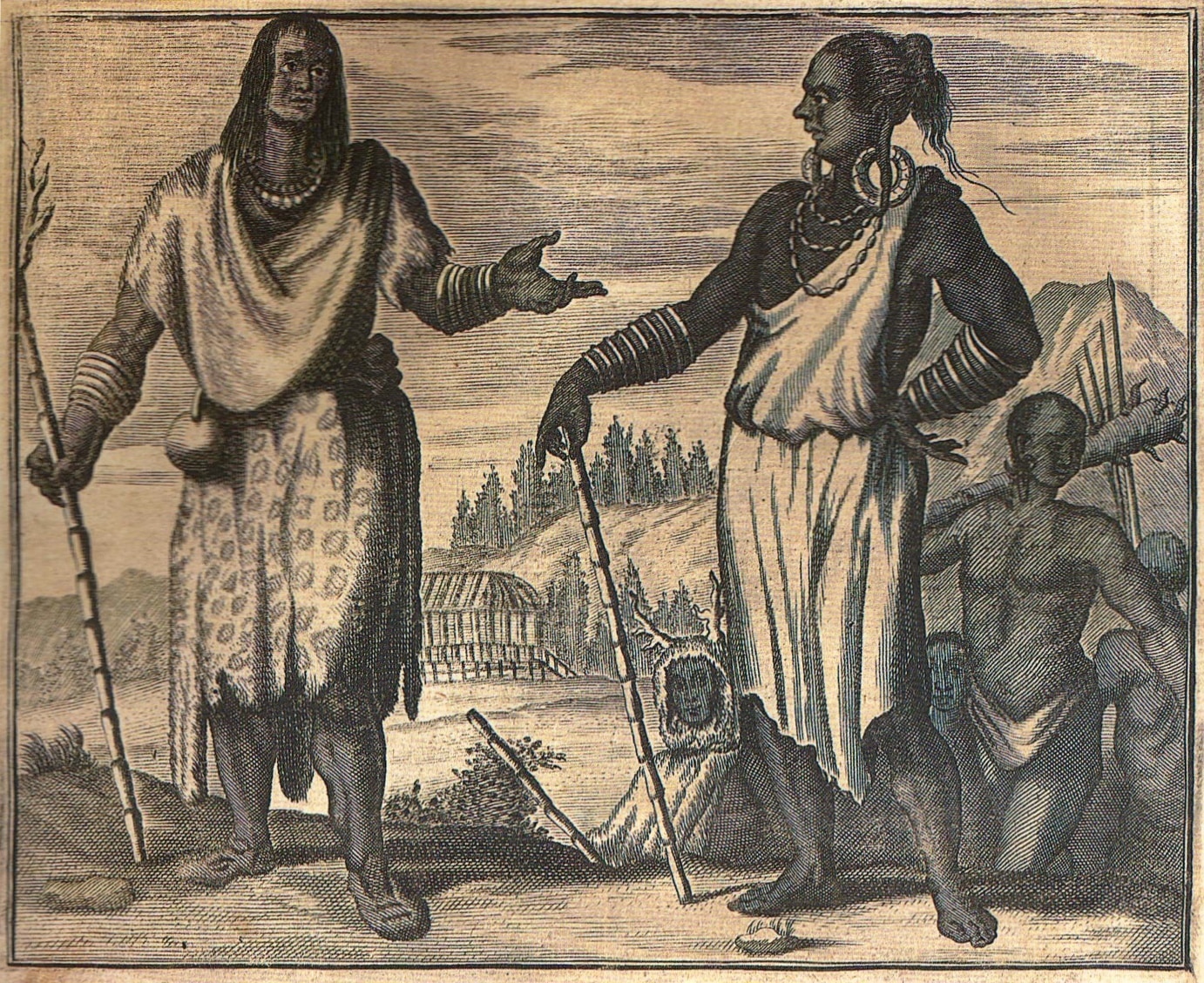 Inhabitants of Dutch Formosa, as depicted in a book of Olfert Dapper (1636-1689), 1670
Inhabitants of Dutch Formosa, as depicted in a book of Olfert Dapper (1636-1689), 1670© Wikipedia
In November 1648 the church consistory reported that the experiment to teach Dutch to local people was having great success. Local people ‘were very much inclined to learn Dutch’ and were able to do so with relative ease. By 1656, about 6,000 aborigines understood Christian teachings, while nearly 2,800, over a quarter, understood more than simple prayers in Dutch. In the 1650s the Dutch built a second fort, which they called Fort Provintia. This is now Chihkan Tower in central Tainan.
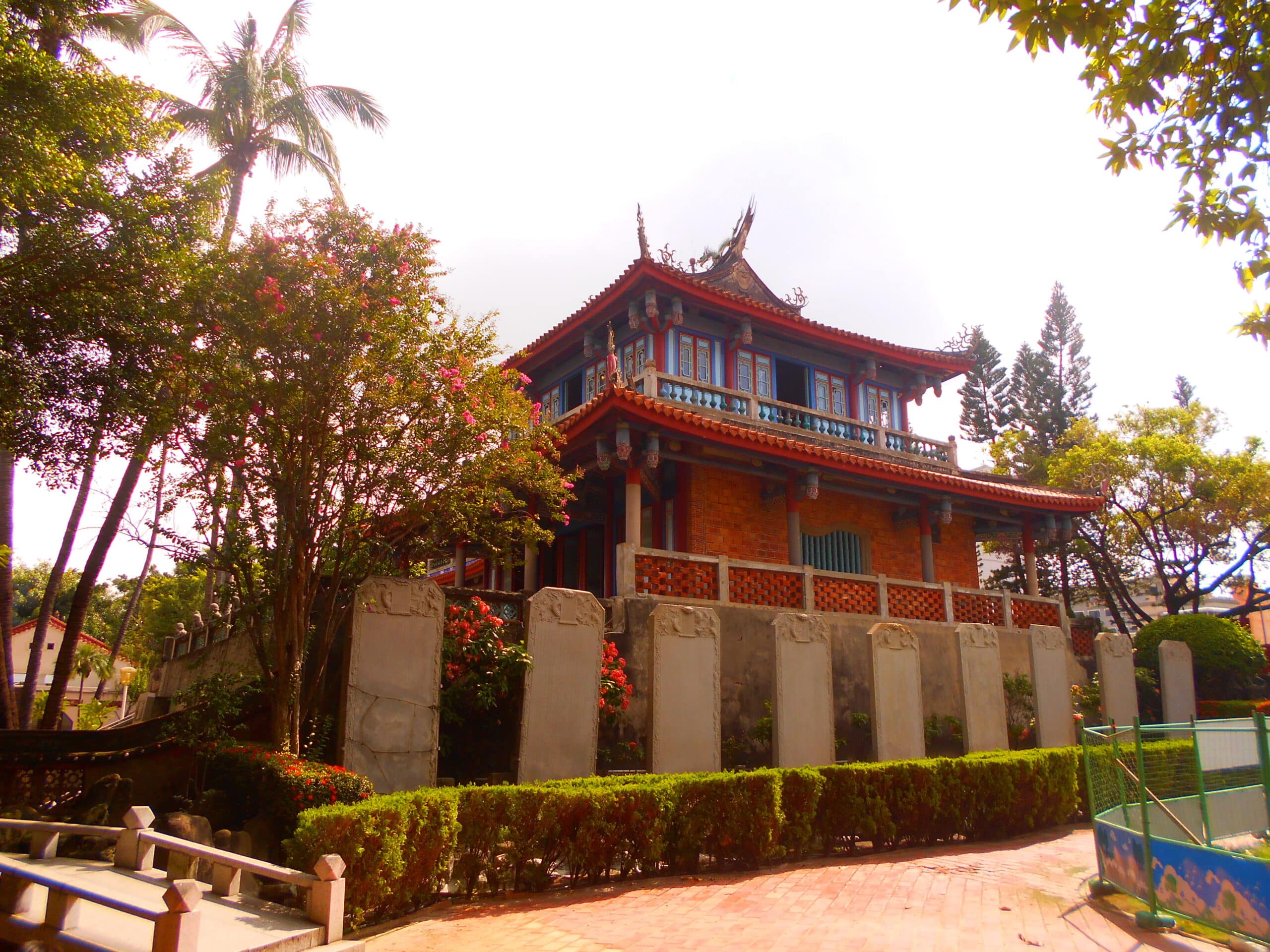 Chihkan Tower in central Tainan is built on the Dutch Fort Provintia
Chihkan Tower in central Tainan is built on the Dutch Fort Provintia© Christopher Joby
In 1657 a seminary was established to educate thirty indigenous seminarians. Marriage records indicate that many Dutch took native women as wives. They, too, may have learnt some Dutch. It is likely that the use of both Dutch and native languages was seen by some as a transitional phase towards a fuller adoption of Dutch. As one commentator observes, ‘If the planners had been able to realize all their dreams, Formosa might have become a Calvinistic, Dutch-speaking island’. However, these dreams were of course not realized as a result of the attack by Koxinga in 1662. The Dutch returned to the north of the island a few years later, but were eventually left as trading conditions were not favourable.
So how did the Dutch language leave its mark on Taiwan? There are reports by French Jesuits in Taiwan of natives being able to speak and read Dutch in the early eighteenth century, some sixty years after the Dutch left the island. Furthermore, the natives continued to use Roman script into the nineteenth century. This allowed them to conclude land contracts with Chinese. In some of these contracts, we find Deus, the Latin word for God introduced by the Dutch.
To turn a profit in Taiwan, the Dutch East India Company had introduced a system of tax farming. The Dutch word pacht
was adopted as pa(k) in Hokkien, a southern variety of Chinese spoken in Taiwan and in Paiwanese, an Austronesian language spoken on the island. The character used in Mandarin Chinese is pronounced p’u. This occurs in several terms such as p’u-she (Hokkien pak-she) for tax-farmer.
There are reports of natives being able to speak and read Dutch some sixty years after the Dutch left the island
Several placenames owe something to Dutch. In the far north of Taiwan is Cape Fugui. It is written in Chinese as 富貴角 (pinyin: Fùguì jiǎo). In Hokkien, this is pronounced Hù-kùi, which is a rendering of the Dutch hoek meaning ‘cape’ (compare Hoek van Holland). The Chinese referred to the Dutch as ‘red haired’ 紅毛 (pinyin:
Hóngmáo). Several places near Kaohsiung in the south of Taiwan include the name, e.g. 紅毛港 Hóngmáogǎng – red-haired harbour.
Dutch contact with Japanese has affected Taiwanese languages in two other ways. First, during the Japanese occupation of Taiwan from 1895 to 1945 the Japanese introduced Dutch loanwords such as bīru (‘beer’) into Hokkien. Second, the main language on Taiwan is now Mandarin Chinese. This has adopted Dutch words via Japanese such as wǎsī ‘gas’ and grammatical terms; for example, the Chinese word 名詞 (míng cí) can be traced back to the Dutch naamwoord. Arguably, though, the most important linguistic remnant of the Dutch presence in Taiwan is the name of the island. The bay where they built Fort Zeelandia was called Tayouan by the native inhabitants. Over time, this name came to replace the Portuguese Ilha Formosa (Beautiful Island) and the various Chinese names for the island.


